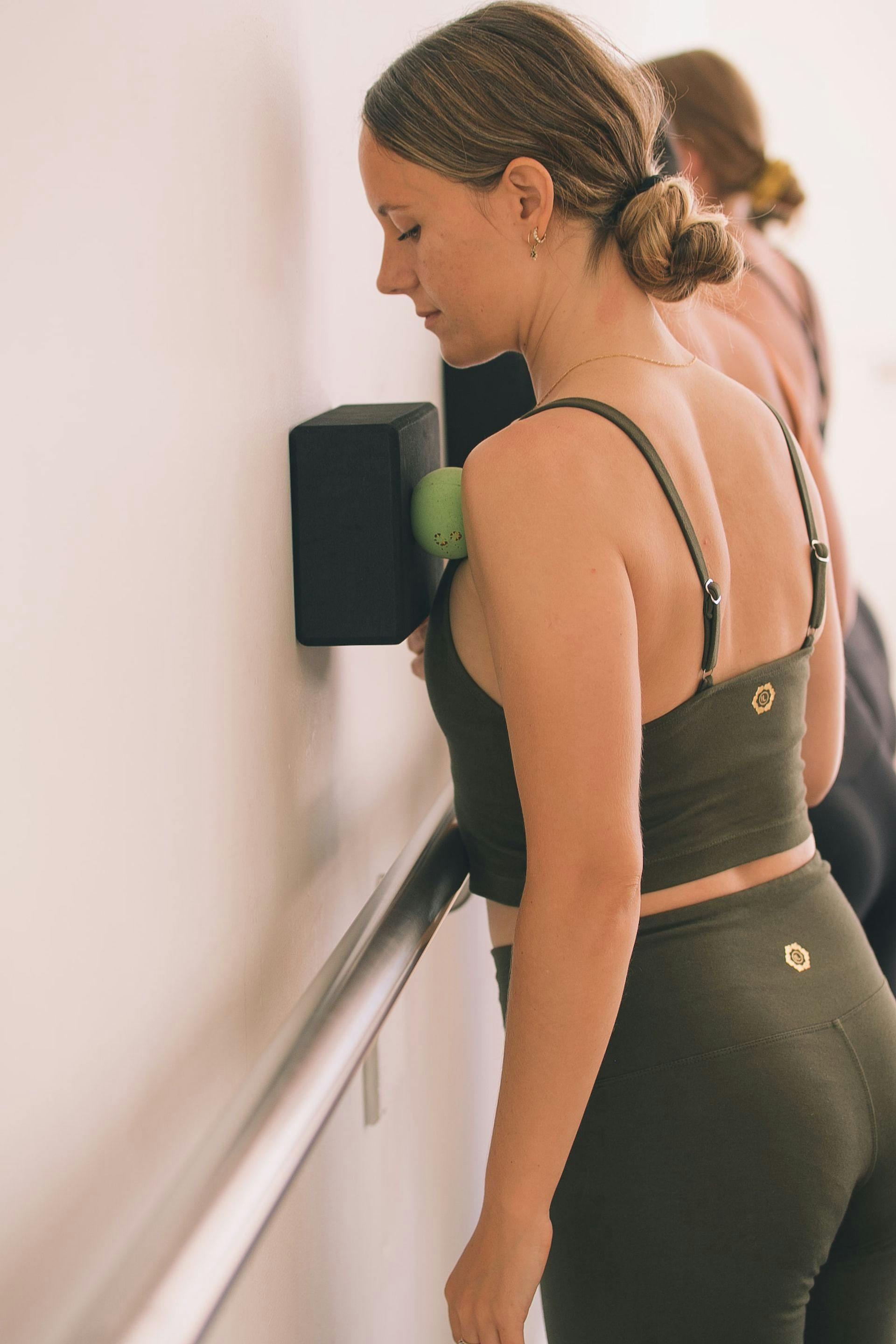16 November, 2022
Self-Massage: Why less is more
Have you ever laid down on a massage tool and felt your entire body tense up and completely forgotten how to breathe?

Massage has more to do with relaxing your nervous system than it does with “breaking up your fascia” – that is why we often preach in class that it doesn’t have to hurt to work. Because of this, the massage tool you use absolutely matters.
Not all massage tools are created equally
There are all sorts of massage tools from knobby foam rollers to balls with spikes, soft air-filled balls, and everything in between. But the most popular (and least expensive) is probably the lacrosse ball. One of the most popular at-home tools for self-massage is the lacrosse ball. Lacrosse balls are too hard for self-massage.
What actually happens?
The goal of self-massage isn’t to “break up” the fascia or connective tissue. In fact, that is impossible to achieve anyway. Your connective tissue is insanely strong, and if It wasn’t, our bodies wouldn’t function. Instead, the goal is to have a conversation with your nervous system.
The goal is to be in conversation with our nervous system
The true goal of self-massage is to feel good. In class, we often discuss the importance of tapping into our parasympathetic nervous system (PNS)– our rest and digest state. In this state we feel relaxed, our breath is slow, our heart rate is steady, and we often can feel a little sleepy. This state is the best place to be if you’re looking to release tension, and find ease in the body.
When we think about our PNS, it makes sense to not force ourselves into submission with the intense hammering of the body with tough tools! Softer tools allow you to unwind, and allows your PNS to activate. The goal is always to be able to breathe fully. If you’re holding your breath, clenching your jaw and gripping on, we’re simply adding more strain to an already tight body.
What we resist, persists
Often the more we resist, the more tightness persists in the body (and mind). If we force ourselves beyond our means, we will notice resistance from tissues and the nervous system.
When you tense up or brace, it’s your body's way of protecting itself. We have stretch receptors in our tissues/tendons that are feeding the brain information about that stretch - and they will tell your brain to tense up to prevent over the stretch from happening. It’s a protective mechanism. So take those sensations as a sign to ease off and go slow (or choose a softer tool!). We don’t want to push ourselves past our tissue tolerance level!
The goal of rolling is to then be able to happily go about strength work, or simply go about your day, without being in pain or fatigued from the massage work.
It doesn't have to hurt to work
What happens when you come across a tight spot?
- You can work around the area of hypersensitivity. Perhaps edge toward that tight spot. You can roll toward, and ease off several times to prepare your body to manage those sensations.
- Often taking time to simply pause and breathe can give your body time to soften and release.
- Newer massage balls (even of the softer variety that we use at Barre Base) can sometimes be too much for certain areas of the body. You can place a towel between your body and the massage tool to soften it. Or you can "break up" the rubber by using it on tougher areas of the body first, such as the feet and glutes. Massage balls do soften with use, which is why we like to always have an older pair and a newer pair on hand, depending on where our massage focus is that day.
For more massage ball ideas, you can check out our Roll & Release series on Barre Base Anywhere, or come along to our Stretch & Lengthen classes that run every Tuesday and Wednesday evenings at 7.30pm.
If you're looking for an appropriate set for home, you can purchase these here. Remember, less is more. Avoid golf balls, lacrosse balls, or anything that your body resists. Listen to the signs.